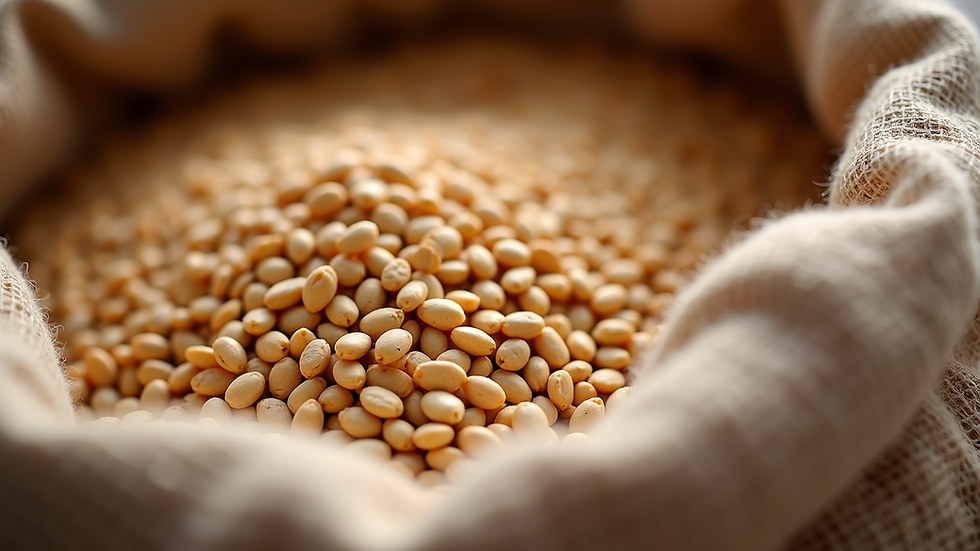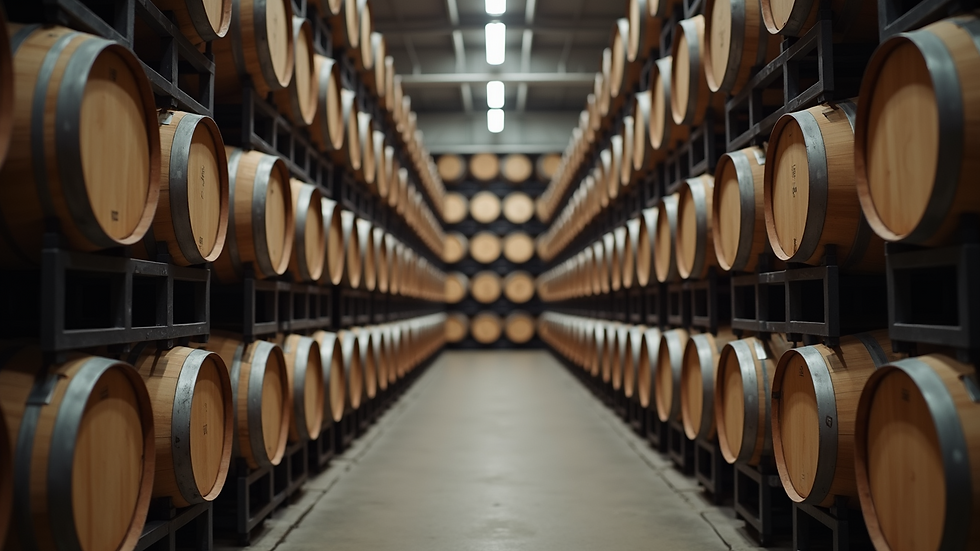A Deep Dive into the Art of Whisky Making
- Kevin Blair
- Jul 24
- 4 min read
Whisky making is more than just a process; it's an art form that combines science, tradition, and passion. From the vast Scottish highlands to the rolling hills of Kentucky, this beloved spirit is crafted with care and precision. In this post, we will explore the intricate journey of whisky making, unveiling the steps involved, the challenges faced, and the unique characteristics that set different whiskies apart.
Understanding Whisky Making
The journey of whisky begins with four essential ingredients: water, malted barley, yeast, and sometimes additional grains. Each of these elements plays a crucial role in the final flavor profile of the spirit.
Water: Essential for mashing and dilution, the source of water can greatly influence the whisky's character. Many distilleries pride themselves on using natural spring water known for its purity and mineral content.
Malted Barley: This grain undergoes a malting process where it’s soaked, germinated, and dried. The variety of barley used can affect the sweetness and color of the whisky.
Yeast: Responsible for fermentation, yeast converts sugars present in the wort into alcohol. Different strains can impart various flavors, from fruity esters to spicy notes.
Grain: Although malted barley is common, some whiskies include corn, rye, or wheat for additional complexity.
The balance and quality of these ingredients are vital in crafting a distinct whisky.

The Steps of Whisky Production
Creating whisky involves several meticulous steps:
Malting
The first stage is malting, where barley is soaked in water, allowing it to germinate. This process activates enzymes that convert starches to sugars. After a few days, the germination is halted by drying the barley in a kiln. This step can also introduce unique flavors depending on the type of fuel used in the kiln.
Mashing
Next comes mashing, where the dried malt is ground into a coarse powder called grist (Milling). Hot water is mixed with the grist in a mash tun, allowing enzymes to further break down starches into fermentable sugars. This sweet liquid, known as wort, is collected for fermentation.
Fermentation
In fermentation tanks, yeast is introduced to the wort. The yeast consumes the sugars, producing alcohol and various flavors. This stage typically lasts three to five days, resulting in a low-alcohol wash that resembles beer.
Distillation
Distillation is where the magic truly happens. The wash is heated in pot stills or column stills. Pot stills provide a traditional method, yielding rich and complex flavors while column stills offer a more efficient, continuous process. The distillation separates alcohol from impurities, enhancing the whisky's depth.
Maturation
After distillation, the spirit is placed in oak casks for maturation. This phase can last from three years to several decades, depending on the type of whisky being produced. The interaction between the spirit and wood contributes to the flavor profile, with factors like climate and barrel history playing significant roles.

Bottling
Once matured, the whisky is filtered and diluted to the desired alcohol percentage before being bottled. Some distilleries choose to bottle at cask strength, offering a more robust experience. The label often conveys the whisky’s age, region, and other essential details.
The Challenges of Whisky Making
Crafting whisky is not without its challenges. Environmental factors, regulatory compliance, and market trends all influence production. For instance, fluctuations in grain prices can affect production costs, while changing consumer preferences may shift demand. Additionally, the maturation process is inherently unpredictable. A batch brewed for a specific age might develop differently due to unique climatic conditions, impacting the spirit's flavor. The Biggest challenge is taxation Specifically, around 73% of the average price of a bottle of Scotch whisky is collected in the form of duty and VAT.
The Evolution of Whisky Regions
Whisky is produced in various regions worldwide, each offering unique flavor profiles:
Scotland: Known for its single malts, Scotch whisky is often characterised by its peaty, smoky flavors, especially from Islay distilleries.
Ireland: Irish whiskey is typically triple distilled for smoothness, with sweeter, lighter notes and utilising a split of unmalted and malted Barley and other grains.
United States: Bourbon, primarily made from corn, and rye whiskey, known for its spiciness, dominate the American scene.
Japan: Japanese whisky has gained global recognition for its meticulous craftsmanship and can offer complex flavour profiles similar to Scotch.
Understanding regional distinctions can enhance your appreciation of different whiskies and help you select the right bottle for your palate.

The Future of Whisky Making
As whisky making continues to evolve, innovations in production methods, sustainability, and flavor experimentation will shape the industry. Emerging distilleries are leveraging technology, such as data analytics, to optimise fermentation and maturation processes. Furthermore, there's an increasing focus on environmental responsibility, with many distilleries using renewable energy and sustainable practices to minimize their carbon footprint.
Notably, consumers demand transparency and authenticity. Many whisky brands are telling their stories through accessible labeling, showcasing their unique production methods and ingredient sourcing. This transparency fosters trust and connection with consumers, ensuring that whisky making remains an art form rich in heritage and innovation.
Exploring Your Whisky Journey
Whether you're a seasoned connoisseur or just beginning your whisky adventure, understanding the art of whisky making can enhance your experience. Take the time to explore different regions, experiment with flavor pairings, and seek out craft distilleries that resonate with your values.
Do not hesitate to connect with local distilleries, where you can often partake in tastings and gain firsthand knowledge about the whisky-making process. Engaging with the stories behind the bottles you enjoy adds a layer of appreciation to your whisky-drinking experience.
In the world of whisky, every bottle holds a story waiting to be discovered. From the ages-old traditions to innovative practices, the art of whisky making is a journey that continues to captivate enthusiasts around the globe. Cheers to your next sip!
